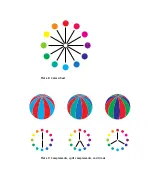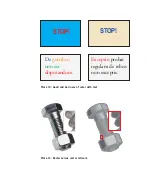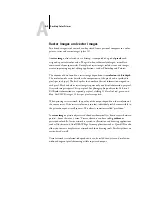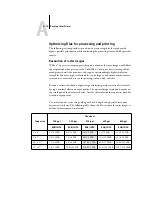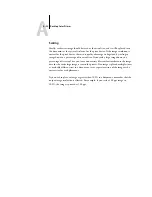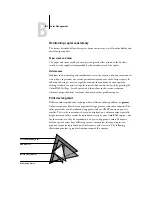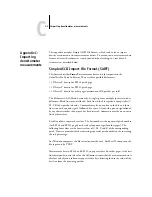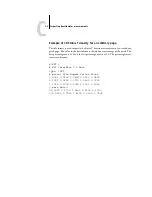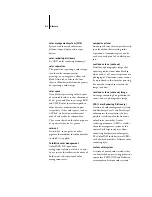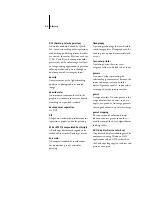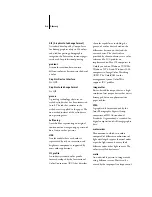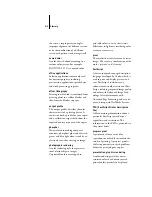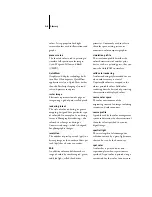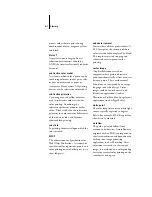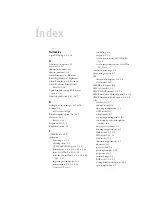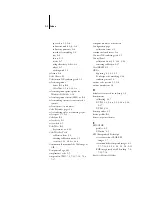
C
C-1
Importing densitometer measurements
This appendix describes Simple ASCII File Format, which can be used to import
density measurements from measurement devices. To use your own measurement data
from an alternate densitometer, record your individual readings in a text file and
structure it as described below.
Simple ASCII Import File Format (SAIFF)
This format describes Status T measurement data and is for import into the
ColorWise Pro Tools Calibrator. There are three possible file formats:
• 1D Status T density for EFI 34 patch page
• 1D Status T density for EFI 21 patch page
• 1D Status T density for other pages (maximum of 256 patches per ink)
The file format is ASCII and has no tabs. A single space or multiple spaces are used as
delimiters. Blank lines are not allowed. Each line in the file represents four patches (C,
M, Y, K) of a specific ink value. Comments may be on any line in the file, and these
lines start with a pound sign (#) followed by a space. A line with a pound sign followed
by any character other than a space has been reserved. Comments must be on an entire
line by themselves.
Each line of data contains five values. The first number is the sequential patch number
(for EFI 34 and EFI 21 pages) or the ink value percentage (for other pages). The
following four values are the density values of C, M, Y, and K of the corresponding
patch. Lines are ordered either by increasing sequential patch numbers or by increasing
the ink percentage.
For Windows computers, the file extension must be .cm1. For Mac OS computers, the
file type must be ‘TEXT’.
Measurement data in EFI 34 and EFI 21 are paper-relative. For other pages, if the first
line corresponds to zero ink value, the Calibrator assumes that the measurement data is
absolute and adjusts it to become paper-relative by subtracting the density values of the
first line from the remaining patches.
Appendix C:
Importing
densitometer
measurements
Summary of Contents for ColorPASS-Z5000
Page 1: ...ColorPASS Z5000 COLOR GUIDE I N C L U D E S F I E R Y S O F T W A R E ...
Page 2: ......
Page 6: ......
Page 96: ......
Page 148: ......
Page 160: ......
Page 172: ......
Page 175: ...Plate 1 Sunlight split into spectral colors by prism Plate 2 CIE chromaticity diagram ...
Page 179: ...Plate 5 Additive color model Plate 6 Color monitor ...
Page 180: ...Plate 7 Subtractive color model ...
Page 185: ...Plate 8 Color wheel Plate 9 Complements split complements and triads ...
Page 198: ......
Page 206: ......
Page 208: ......





